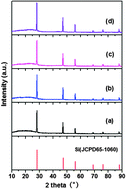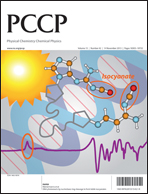Core–shell Si–N-doped C assembled via an oxidative template for lithium-ion anodes
Abstract
The Si–NC core–shell composite was synthesized by a modified oxidative template assembly route using a facile carbonization process. The images of the obtained Si–NC composites showed that an amorphous NC layer adsorbed stably and tightly on the nano-Si surface with an only several nanometers thickness to the formation of the Si–NC core–shell structure, which was beneficial for the electronic contact of Si nanoparticles. For the Si–NC-700 anode, it could be calculated that the initial charge capacity was 986.2 mA h g−1 at a rate of 0.2 C. And it could still be kept at 764.4 mA h g−1 over 100 cycles, with a little capacity loss of 0.22% per cycle. Moreover, it was concluded that the Si–NC-700 anode could achieve a capacity of 790.8 mA h g−1 for the first cycle, and significantly remain at 778.2 mA h g−1 over 500 cycles at a rate of 0.5 C. These excellent electrochemical performances could probably be due to the N-doping generating the extrinsic defects and the absorption of Li ions, and hence result in a superior long-term cycling stability and rate capability. This suggests that the core–shell Si–NC composite is a promising material for improving the electrochemical performance of lithium-ion anodes.


 Please wait while we load your content...
Please wait while we load your content...